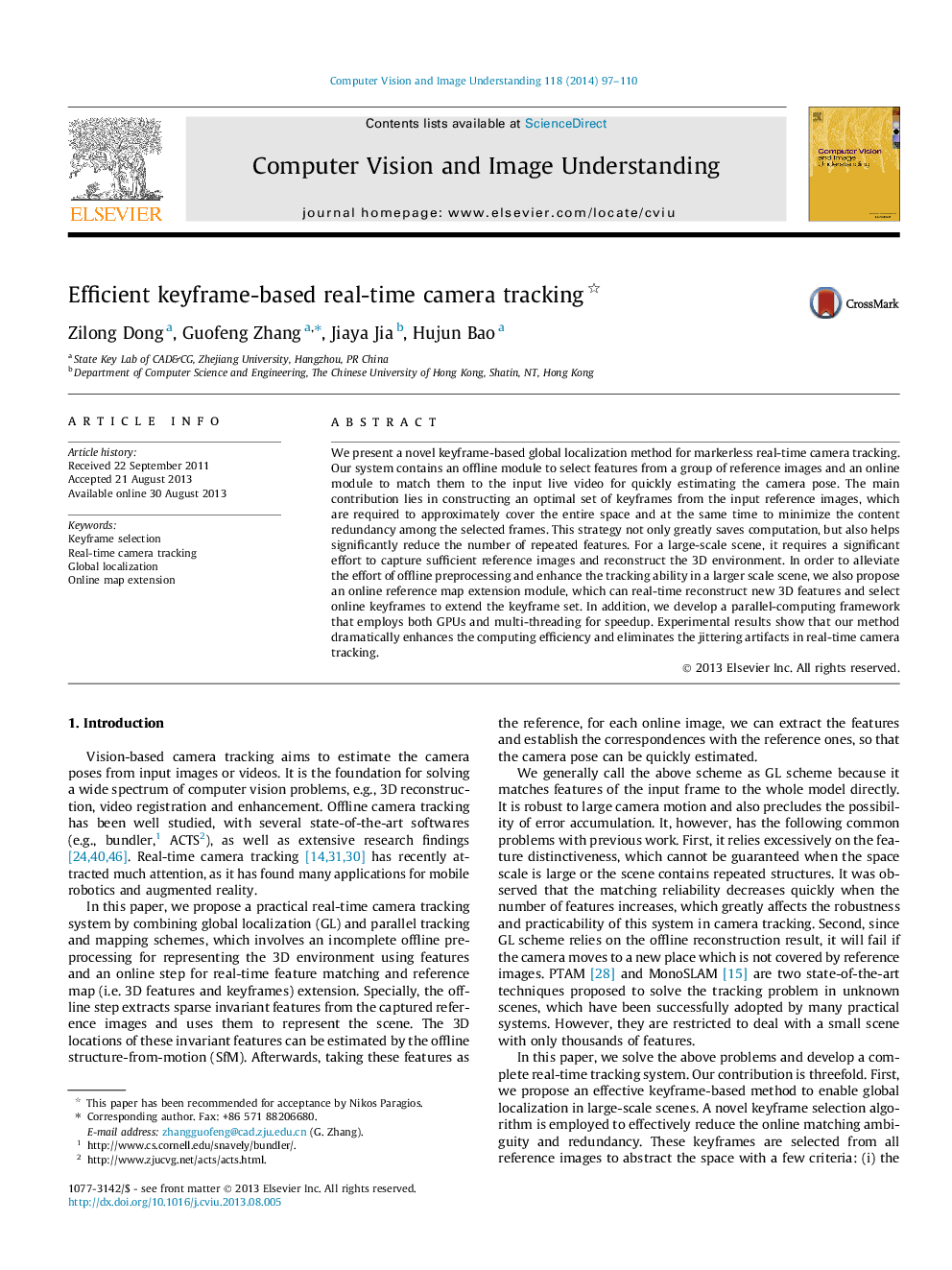| Article ID | Journal | Published Year | Pages | File Type |
|---|---|---|---|---|
| 527690 | Computer Vision and Image Understanding | 2014 | 14 Pages |
•We propose a new keyframe-based global localization framework.•We use online map extension to significantly enhance the ability of global localization.•Selecting an optimal set of keyframes for scene representation.•Fast keyframe recognition for selecting candidate keyframes for online matching.•A two-pass keyframe-based matching incorporating temporal information
We present a novel keyframe-based global localization method for markerless real-time camera tracking. Our system contains an offline module to select features from a group of reference images and an online module to match them to the input live video for quickly estimating the camera pose. The main contribution lies in constructing an optimal set of keyframes from the input reference images, which are required to approximately cover the entire space and at the same time to minimize the content redundancy among the selected frames. This strategy not only greatly saves computation, but also helps significantly reduce the number of repeated features. For a large-scale scene, it requires a significant effort to capture sufficient reference images and reconstruct the 3D environment. In order to alleviate the effort of offline preprocessing and enhance the tracking ability in a larger scale scene, we also propose an online reference map extension module, which can real-time reconstruct new 3D features and select online keyframes to extend the keyframe set. In addition, we develop a parallel-computing framework that employs both GPUs and multi-threading for speedup. Experimental results show that our method dramatically enhances the computing efficiency and eliminates the jittering artifacts in real-time camera tracking.
